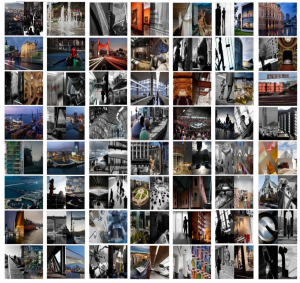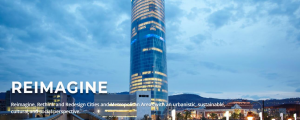
IMC Journal – May / June 2021 – XABIER ARRUZA, Founder and Manager, Bilbao Urban & Cities design
Based in the experience gained during the award winning Bilbao Metropolitan Urban Transformation and our later projects in different cities and urban areas around the world, we are following very closely the huge urbanization process that India is facing nowadays (urban population expected to reach 600 million by 2031, an increase of nearly 40% from 2011).
In India, urbanization has become an important and irreversible process, and it is an important determinant of national economic growth and poverty reduction, but actually urban population is growing above the capabilities of their current cities in terms of inhabitants, people’s needs, sufficient and good quality housing, sanitation, transportation or parks and community spaces.
However, the pandemic has offered a glimpse into what cities could look like if we pursued an alternative growth model – one that actively reduces waste and carbon emissions, while concurrently creating space for nature.
“Cities of asphalt and concrete” could be a description of the cities of our era. To mitigate this visualization, from Bilbao Urban & Cities Design we are planning a series of actions that seek to “re-naturalize increasingly artificial spaces”.
During last COP25 the role of biodiversity and green infrastructures in the face of climate change scenarios, was largely debated.
The European Commission determines in its report “Building a green infrastructure for Europe” that investing in a green infrastructure means betting on a network of natural and semi-natural areas, which in good condition, can offer higher value services. The goal of creating green infrastructure is therefore to enhance nature’s ability to provide multiple and valuable ecosystem, goods and services, such as water, clean air, or carbon sinks.
We do not question what a road infrastructure, an airport or a port is worth, which undoubtedly have its functionality, but, on the other hand, we do not value the functionality of green infrastructures, which are those that give sense to the territory and ground use.
We need a change of mentality in public administrations, where “a new approach to environmental management” should be applied.
All cities and urban areas should develop studies on the application of Nature-Based Solutions, in order to:
- Increase the level of urban nature.
- Reduce energy consumption.
- Reduce the effects of climate change, specially the so called heat islands.
- Improve atmospheric quality.
- Reduce the rate of existing waterproofing.
And as a result of this bet, we will also benefit from the professionalization of this kind of new jobs associated to the Green Economy.
But the journey towards decarbonisation is not an easy one, and could not be achieved only with the aboved mention green infraestructures.
Adapting cities to achieve sustainable growth is one of the great challenges of this century.
Cities consume 67% of the world’s energy, 75% of natural resources, produce 70% of total CO2 and 70% of total waste.
We are therefore growing beyond our possibilities and buildings, vehicles, energy, transport, water infrastructure or communications are far from what they should be part of: sustainable and efficient cities.
This implies that city decarbonization strategies should be one of the highest priorities for public representatives.
Energy is almost always identified as the main vector to achieve this, through the elimination of fossil fuels and the improvement of energy efficiency.
But from our vision as urban planners, the urban design of cities is often overlooked, this being the most important factor.
Many cities have suffered from an excessive expansion with very low densities, which causes work centers to have been transferred to the periphery (such as Industrial Parks or Technology Parks), leisure and consumption have been diverted to large Shopping Centers in the suburbs, causing the need for mobility for daily tasks.
It is therefore necessary, first of all, to rethink and redesign our cities, betting on dense or proximity city models – creating districts or neighborhoods with mixed uses, where we can live, work or study and make basic purchases in a short distance area, avoiding this way need for transportation.
Because transport is precisely one of the vectors that most contributes to the emission of GHG. And the commitment to electrification that is being sold to us is not going to be a panacea. The main objective should be to reduce the dependence and use of private vehicles, that in Bilbao for instance, has only an average occupation of 1.23 users per vehicle, remaining parked between 92 and 97% of its entire useful life; that is to say, a totally inefficient model.
Hence, one of the clear bets should be to resize public transport and discourage the use of private vehicles by applying restrictions for its use in urban environments. Combining it with the so-called mobility services on demand and the new micro-mobility systems, which together can offer alternatives to the private vehicle.
Citizens must understand that we all have our responsibility level and our habits must also change for the common benefit.
And finally, I would highlight two very important strategies to be developed:
- Consider the city as an “energy plant”, thanks to all its buildings and infrastructures, currently underused and going forward in its rehabilitation.
- Bet on Circular Economy models, in order to eradicate consumption and production models based on “use and throw away”, which generate huge amounts of waste from single-use products.
We are a hub of Urban Strategy Thinkers who came across during the Bilbao Metropolitan Urban Transformation. A spin off project from the Local and Regional Government.
We firmly believe that the enriching experience gained during that award-winning process may serve to inspire other cities around the world.
Bilbao Urban & Cities Design gathers together professionals from different areas such as urbanism, architecture, engineering, environment, energy efficiency, and mobility, strongly engaged with more sustainable and efficient urban models.
We promote innovative urbanistic models that integrate in a long term vision strategy to improve the quality of live of the citizens and attract new investors to compete internationally in the new World of Smart Cities.
In addition, Bilbao Urban & Cities Design embraces some of the best and most innovative Urban Solution Companies.

IMC JOURNAL (MAY JUNE 2021) LOW RES

Recent Comments